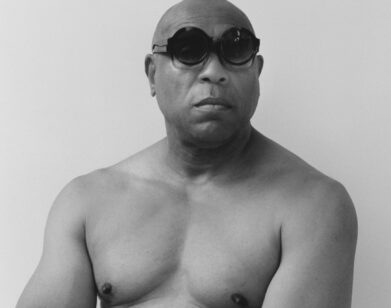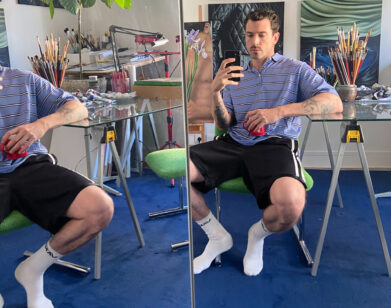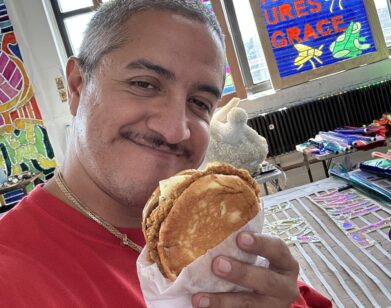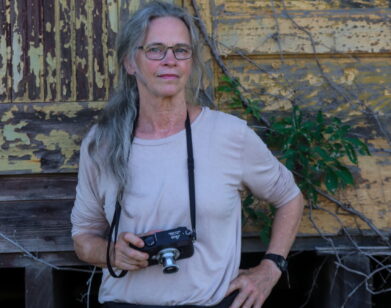Banks Violette
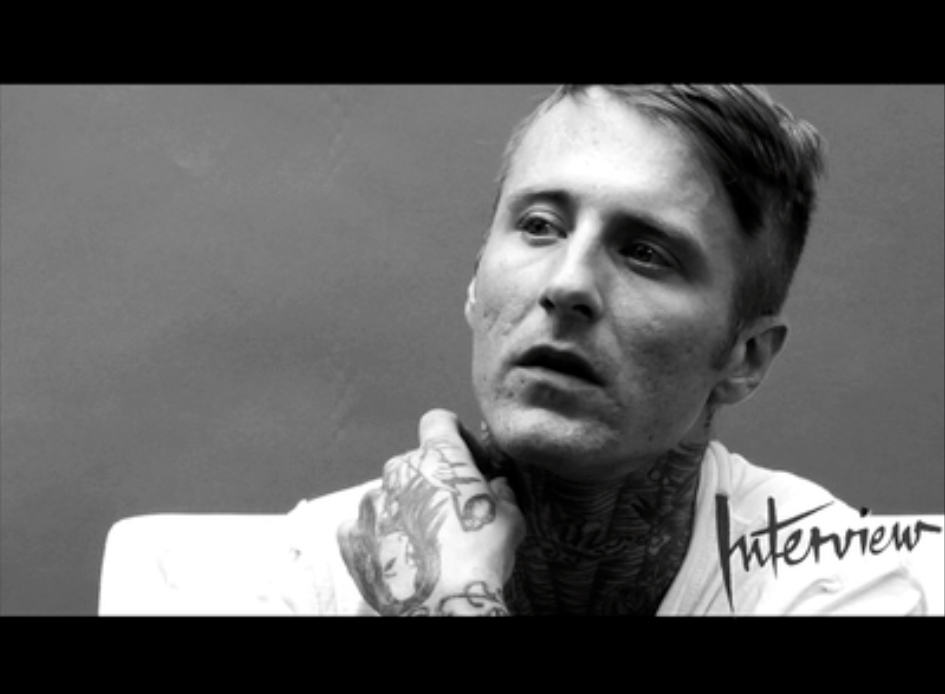
Banks Violette

Banks Violette

In his recent show at Maureen Paley in London, 34-year-old artist Banks Violette projected the image of the white, galloping horse from the opening of TriStar Pictures movies on water vapor being blown by a fan. In many ways, Violette was referencing a work by one of his heroes, Jack Goldstein, who looped the roaring MGM lion in a 1975 video piece. Violette’s TriStar horse keeps running, and the everlasting lifespan of the hackneyed image is very much a part of the New York artist’s experiments. Specifically, Violette focuses on youth and subcultures (black is his frequent working color), simultaneously celebrating their revolt and revealing the queasy way they recycle images and slogans to keep themselves alive.

How do you take a discrete object that is placed pretty much on a pedestal and make it radiate out into the environment? We fill it up with the sound equivalent of
the sculpture.Banks Violette
CHRISTOPHER BOLLEN: I noticed on your Team Gallery CV that you list 1993 as the year you got your GED. [Violette laughs] That’s a wonderful inclusion.
BANKS VIOLETTE: Yeah, I kind of insisted on that.
CB: Your TriStar horse is an homage to Goldstein’s MGM lion. But you’ve also used horses in previous works.
BV: Like a lot of the images that I’ve used, it’s iconography that’s just kind of exhausted and overmined. It’s the visual equivalent of strip-mining.
CB: You also have a whole set of images that are hardcore punk and metal. Is there some corollary between subculture and overused images?
BV: There’s an absolute corollary. One of the things I’m interested in, insofar as subcultures are concerned, is how subculture really traffics in overexhausted iconography, especially with aggression and morbidity. Most subcultures keep notching up the irony levels. That’s the paradox-that the chosen images are things that have been completely strip-mined and that all value has already been leached out. And then you try to update them so people invest that much more belief into them.
CB: Does art do that, too? Is art a place where you artists just take the same old clichéd images and reinvent them like everyone else?
BV: That’s the thing I’m interested in, especially in the instance of Jack Goldstein. He is a perfect case in point. He took a critical distance from culture when he was alive. But in the end, he’s become a part of the very culture that he was trying to break from. This sounds horrible, but it’s a parody of the romantic artist who disappears, dies, and is brought back and picked up in the broader public conversation. Now his work sells for a lot of money.
CB: Music seems to be a major touchstone in your work. You’ve collaborated with a number of musicians.
BV: I definitely get a lot of ideas from music and from musicians I’ve worked with. In the instance of Stephen O’Malley-who plays with the band Sunn O)))—he’s involved with a lot of low-frequency kind of sub-audible compositions, things that are really less auditory and more physiological. That seems like a perfect complement to the idea of sculpture—it has weight, gravity, it extends itself into space, etc. How do you take a discrete object that is placed pretty much on a pedestal and make it radiate out into the environment? We fill it up with the sound equivalent of the sculpture.
Banks Violette

In his recent show at Maureen Paley in London, 34-year-old artist Banks Violette projected the image of the white, galloping horse from the opening of TriStar Pictures movies on water vapor being blown by a fan. In many ways, Violette was referencing a work by one of his heroes, Jack Goldstein, who looped the roaring MGM lion in a 1975 video piece. Violette’s TriStar horse keeps running, and the everlasting lifespan of the hackneyed image is very much a part of the New York artist’s experiments. Specifically, Violette focuses on youth and subcultures (black is his frequent working color), simultaneously celebrating their revolt and revealing the queasy way they recycle images and slogans to keep themselves alive.

How do you take a discrete object that is placed pretty much on a pedestal and make it radiate out into the environment? We fill it up with the sound equivalent of
the sculpture.Banks Violette
CHRISTOPHER BOLLEN: I noticed on your Team Gallery CV that you list 1993 as the year you got your GED. [Violette laughs] That’s a wonderful inclusion.
BANKS VIOLETTE: Yeah, I kind of insisted on that.
CB: Your TriStar horse is an homage to Goldstein’s MGM lion. But you’ve also used horses in previous works.
BV: Like a lot of the images that I’ve used, it’s iconography that’s just kind of exhausted and overmined. It’s the visual equivalent of strip-mining.
CB: You also have a whole set of images that are hardcore punk and metal. Is there some corollary between subculture and overused images?
BV: There’s an absolute corollary. One of the things I’m interested in, insofar as subcultures are concerned, is how subculture really traffics in overexhausted iconography, especially with aggression and morbidity. Most subcultures keep notching up the irony levels. That’s the paradox-that the chosen images are things that have been completely strip-mined and that all value has already been leached out. And then you try to update them so people invest that much more belief into them.
CB: Does art do that, too? Is art a place where you artists just take the same old clichéd images and reinvent them like everyone else?
BV: That’s the thing I’m interested in, especially in the instance of Jack Goldstein. He is a perfect case in point. He took a critical distance from culture when he was alive. But in the end, he’s become a part of the very culture that he was trying to break from. This sounds horrible, but it’s a parody of the romantic artist who disappears, dies, and is brought back and picked up in the broader public conversation. Now his work sells for a lot of money.
CB: Music seems to be a major touchstone in your work. You’ve collaborated with a number of musicians.
BV: I definitely get a lot of ideas from music and from musicians I’ve worked with. In the instance of Stephen O’Malley-who plays with the band Sunn O)))—he’s involved with a lot of low-frequency kind of sub-audible compositions, things that are really less auditory and more physiological. That seems like a perfect complement to the idea of sculpture—it has weight, gravity, it extends itself into space, etc. How do you take a discrete object that is placed pretty much on a pedestal and make it radiate out into the environment? We fill it up with the sound equivalent of the sculpture.

